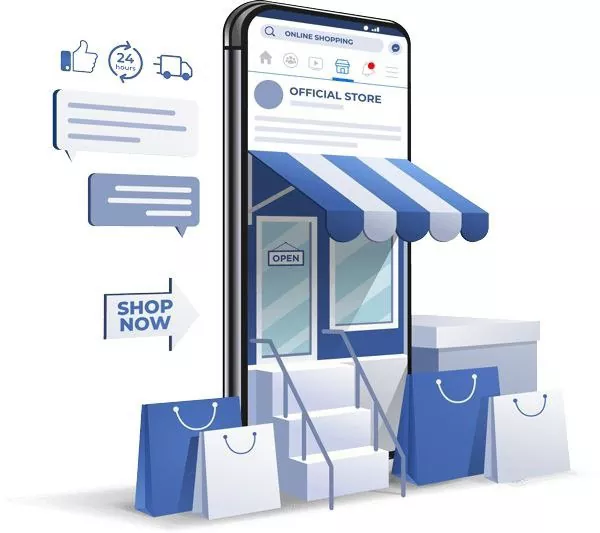The Architect’s Guide to E-commerce Website Design in 2024
In the hyper-competitive digital marketplace of 2024, a powerful online presence is not just an advantage; it’s the bedrock of business survival. E-commerce websites are the modern storefront, the sales floor, and the brand ambassador rolled into one. However, simply existing online is not enough. The success of an e-commerce venture hinges on a meticulously crafted user experience, and at its core lies a strategic e-commerce website design. Choosing or creating the right template is one of the most fundamental factors for sustainable growth. This comprehensive guide delves into the essential principles, advanced features, and critical considerations for building an e-commerce platform that doesn’t just display products, but actively converts visitors into loyal customers.
Section 1: The Foundation – An Intuitive User Experience (UX) and Flawless Navigation
The first impression a visitor has of your site is decisive. A confusing or clunky interface will send potential customers to your competitors in seconds. The foundation of any successful e-commerce website design is a seamless and intuitive user experience, ensuring the customer’s journey from discovery to checkout is as smooth as possible.
Effortless Navigation and Site Architecture
Think of your website’s navigation as the floor plan of a physical store. It must be logical and easy to follow. A well-structured site reduces cognitive load, allowing users to find what they’re looking for without frustration.
- Logical Categories: Group products into clear, distinct categories and subcategories. Use language that your target audience understands, avoiding internal jargon.
- Visible Menu: A prominent, consistent navigation bar (header) is crucial. A ‘mega menu’ can be effective for stores with extensive inventories, offering a comprehensive overview at a glance.
- Breadcrumbs: Implement breadcrumb trails (e.g., Home > Men’s > Shoes > Running) to help users understand their location within the site’s hierarchy and navigate backward easily.
Powerful Search and Filtering Capabilities
For users who know what they want, the search bar is the most important tool on your site. A basic search function is no longer sufficient. An advanced search system is a cornerstone of modern e-commerce website design.
- Smart Search: Your search bar should offer auto-complete suggestions, handle typos, and even understand synonyms to provide relevant results.
- Advanced Filtering: Allow users to refine search results with layered filters based on attributes like price, size, color, brand, and customer ratings. The more specific they can be, the faster they’ll find the right product.
Section 2: The Digital Showroom – Compelling Product Presentation
Since customers cannot physically touch or inspect products online, your product pages must do all the heavy lifting. This is where high-quality visuals and persuasive information converge to drive the purchase decision.
High-Quality Visuals Are Non-Negotiable
Visuals sell. Blurry, low-resolution, or single-angle photos are a major conversion killer. Your template must support a robust media gallery for each product.
- Multiple High-Resolution Images: Showcase products from various angles, in different contexts, and with close-up shots of key details.
- 360° Product Views: An interactive 360° view gives customers a more tangible sense of the product, bridging the gap between online and in-store shopping.
- Product Videos: Short videos demonstrating a product in use can significantly increase engagement and conversion rates by showing its benefits and functionality.
Building Trust with Social Proof
Modern consumers trust their peers more than they trust advertisements. Integrating social proof directly into your e-commerce website design is essential for building credibility and alleviating purchase anxiety.
- Customer Reviews and Ratings: Display authentic customer reviews and a clear star-rating system prominently on product pages. Allow users to sort reviews to find the most helpful ones.
- User-Generated Content (UGC): Encourage customers to share photos of themselves using your products. A gallery of UGC provides powerful, real-world validation.
The Rise of AI and AR in E-commerce
Cutting-edge templates are now incorporating artificial intelligence (AI) and augmented reality (AR) to create hyper-personalized and interactive experiences.
- AI-Powered Recommendations: Move beyond basic suggestions. AI can analyze a user’s browsing behavior to offer highly relevant product recommendations, creating personalized shopping journeys that boost average order value.
- Augmented Reality Try-Ons: For industries like fashion, beauty, and furniture, AR is a game-changer. Allowing a customer to use their phone’s camera to see how a pair of glasses looks on their face or how a sofa fits in their living room can dramatically increase purchase confidence.
Section 3: The Engine Room – Performance, Mobile-First Design, and Accessibility
Behind the beautiful facade of your e-commerce site must be a powerful engine. Technical performance, mobile optimization, and accessibility are not optional add-ons; they are critical components of a successful e-commerce strategy.
The Critical Importance of a Mobile-First Design
In the past, designers created websites for desktops and then adapted them for mobile. This approach is now obsolete. With the majority of internet traffic originating from mobile devices, a mobile-first approach is essential. This means designing the experience for the smallest screen first and then scaling up. Google’s mobile-first indexing policy means it primarily uses the mobile version of a site for ranking and indexing. A poor mobile experience doesn’t just frustrate users—it actively harms your SEO.
Optimized Loading Speed
Every second counts. A delay of just a few seconds in page load time can lead to a significant increase in bounce rates and a decrease in conversions. A suitable e-commerce template should be built for speed.
- Optimized Code: The template should have clean, efficient code that doesn’t bog down browsers.
- Image Compression: It should support modern image formats (like WebP) and lazy loading to ensure visuals don’t slow down the initial page load.
- Minimal Server Requests: A well-designed theme reduces the number of requests to the server, resulting in faster rendering times.
Accessibility for All Users
An accessible website is one that can be used by everyone, including people with disabilities. This is not only an ethical imperative but also a legal and commercial one. Adhering to Web Content Accessibility Guidelines (WCAG) broadens your potential customer base and can improve your SEO, as search engines favor well-structured, accessible content.
Section 4: The Vault – Security, Trust, and a Frictionless Checkout
Customers are entrusting you with their sensitive personal and financial information. Any doubt about the security of your website will shatter that trust and kill the sale. A secure and transparent environment is paramount.
Robust Security Measures
Security must be built into the fabric of your e-commerce website design.
- SSL Certificates: An SSL certificate (indicated by HTTPS in the URL) is mandatory. It encrypts data transmitted between the user’s browser and your server, protecting sensitive information.
- PCI DSS Compliance: If you process card payments, you must adhere to the Payment Card Industry Data Security Standard. Many payment gateways handle this, but your platform must support these secure integrations.
- Secure Password Management: Ensure your platform enforces strong password policies for customer accounts to protect them from unauthorized access.
Streamlined Checkout and Diverse Payment Options
The checkout process is the final hurdle. A complicated or lengthy checkout is a primary cause of cart abandonment. The goal is to make this process as frictionless as possible.
- Guest Checkout: Don’t force users to create an account to make a purchase. Always offer a guest checkout option.
- Multiple Payment Gateways: Integrate with trusted and diverse payment gateways. This includes standard credit/debit cards as well as digital wallets like PayPal, Apple Pay, and Google Pay, and increasingly popular ‘Buy Now, Pay Later’ (BNPL) services.
Section 5: Future-Proofing – SEO and Scalability
Your e-commerce website is not a static project; it’s a dynamic business tool that must evolve. The right template provides a solid foundation for growth and visibility.
Built-in Search Engine Optimization (SEO) Features
While content is king, technical SEO is the castle. A good e-commerce template should provide you with the tools to optimize your site for search engines.
- Customizable Metadata: You should be able to easily edit titles, meta descriptions, and alt tags for products, categories, and pages.
- Clean URL Structures: The template should generate logical, human-readable URLs (e.g., yoursite.com/products/running-shoe-model-x).
- Schema Markup Support: Support for product schema helps search engines understand your content better, enabling rich results like prices and ratings to appear directly in search listings.
Scalability for Business Growth
Your business will grow, and your website must be able to grow with it. A scalable e-commerce website design can handle an increasing number of products, categories, and traffic without a decline in performance. Choose a template or platform that supports extensions and integrations, allowing you to add new features and functionalities as your business needs evolve.
Conclusion: Your Blueprint for Digital Success
Ultimately, selecting or creating a template for an e-commerce website is about much more than aesthetics. It’s a strategic decision that impacts user experience, conversion rates, security, and search engine visibility. By focusing on the core pillars of intuitive navigation, compelling product presentation, mobile-first performance, and unwavering security, you can build a platform that not only attracts customers but also fosters trust and drives sustainable growth. An investment in a superior e-commerce website design is an investment in the long-term success of your business in the digital age.
Sources:
- Smashing Magazine on Web Performance
- Nielsen Norman Group on Mobile-First Design






